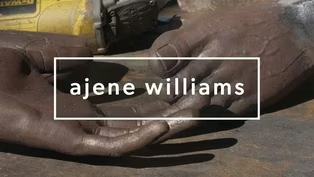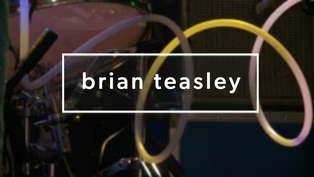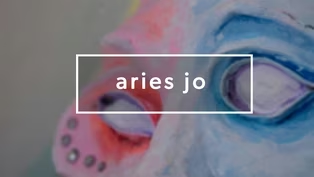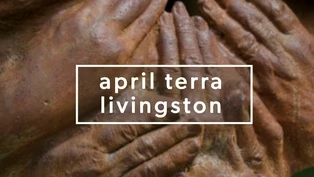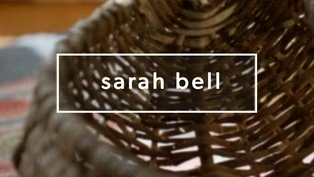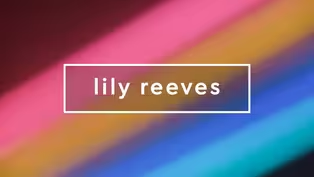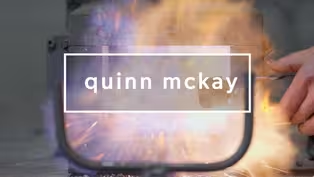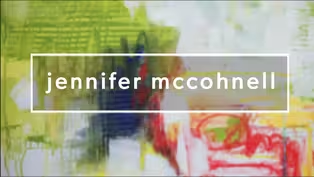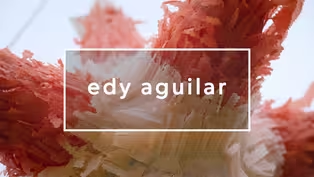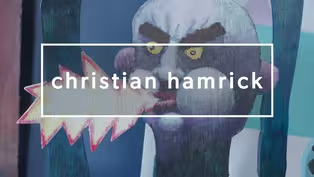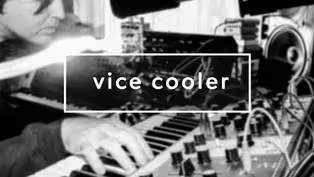Monograph
David Brower
Clip: Season 7 | 6m 50sVideo has Closed Captions
Artist David Brower on his interdisciplinary creative journey.
Artist David Brower reflects on his evolution from photography to filmmaking, drawn by collaboration and storytelling. He discusses transitioning from commercial work to more meaningful projects, his multi-disciplinary creative practice, and moves from Chicago to the American Southwest, finding inspiration everywhere.
Problems playing video? | Closed Captioning Feedback
Problems playing video? | Closed Captioning Feedback
Monograph is a local public television program presented by APT
Monograph
David Brower
Clip: Season 7 | 6m 50sVideo has Closed Captions
Artist David Brower reflects on his evolution from photography to filmmaking, drawn by collaboration and storytelling. He discusses transitioning from commercial work to more meaningful projects, his multi-disciplinary creative practice, and moves from Chicago to the American Southwest, finding inspiration everywhere.
Problems playing video? | Closed Captioning Feedback
How to Watch Monograph
Monograph is available to stream on pbs.org and the free PBS App, available on iPhone, Apple TV, Android TV, Android smartphones, Amazon Fire TV, Amazon Fire Tablet, Roku, Samsung Smart TV, and Vizio.
Providing Support for PBS.org
Learn Moreabout PBS online sponsorship(gentle music) - Being an artist is too much of a pigeonhole.
But, as a species, I think we're, by nature, creative.
(gentle music) I'm really just solving problems.
I'm really just answering questions.
And, you know, maybe the most artistic part is asking the right question.
(gentle music) I accidentally went to film school.
I was studying photography at Columbia College in Chicago.
I was experimenting with all kinds of different printmaking and whatever just looked interesting.
(gentle music) I look back and I see that I was doing triptych images that were playing with, you know, the patterns that kind of go through three images, that kind of thing.
But I also realize in hindsight that, you know, I'm filming rack focuses, and pans, and tilts, and really, mentally, I'm already, before I even accidentally took a film class, moving towards thinking that way.
Kind of interesting, you know, how the mind works.
But what grabbed me with filmmaking was the collaboration that, you know, coming together of greater than the sum of its parts kind of phenomenon, visual to music, to writing.
It's also the science and technology of it all.
Optics, exposure, and the combination of the people and the way they work together that makes the process magic.
(gentle upbeat music) It's all of that stuff coming together that makes it a whole, and I think kind of cliche to say, makes you a whole person.
I mean, uses all parts of your brain.
(gentle upbeat music) The worst day on the set is better than the best day in the office.
I loved commercials because, generally speaking, you had all the tools to play with.
It's fun in that way, but then there's something so much more gratifying about telling a story longer than 30 seconds.
And, at some point, you gotta do something that doesn't just pay the bills, but feeds the soul a little bit.
I love the part about seeing somebody else's perspective on a subject, and their ideas about it, and bringing that to life.
I remember going to a sidewalk salon and saying, "Hey, you know, if anybody needs a DP for their short project, I'd be interested in reading the script.
You know, if it's a good script, I'd be happy to shoot it for you."
You know, for me to do something that fed the soul and to do something that was outside the norm.
I didn't think of it as mentoring, but I had a lot of fun projects with a lot of really talented people just by being open to it.
(gentle music) At the drawing group, I might use five different media in 2 1/2 hours, because, you know, this pose makes me think I should work in charcoal and this pose makes me think I should work in BIC pen or, you know, whatever it is.
And it almost doesn't matter the media as long as I'm making something.
(gentle upbeat music) The gallery showing that I was a part of, it sort of covered the range of what I dabble with.
One of them was a quilt, one of them was a drawing/mixed media piece, and I think maybe four, five, six of them were photographs.
It's not so much about the technique.
Each one I do, my skills get sharper and they're a little more refined.
But, you know, I kind of stumble into, you know, what I do next.
(gentle upbeat music) Many people in their lives go through a series of reinventions, but I think what's very much a part of a creative life is that, you know, whatever you're doing is going to change.
In my career, I've worked my way from, you know, a very large city in Chicago, to a little smaller in Phoenix, to Birmingham, to Albuquerque now.
There's no place that has a monopoly on talent, and vision, and stories, and you can find them anywhere.
Alabama was kind of the last place I thought I would be for any length of time.
We thought it would only be a few years before we moved out west again.
You know, kids sink roots, you start a business, one thing leads to another.
Before you know it, a few decades have passed.
(gentle music) I love the tenacity of the desert.
I love being able to see for 100 miles.
It really puts life in perspective when you can look off into the distance and see the mesas that are the high ground and understand that the top of those mesas is lava flow that filled the valleys of eons ago, and everything else has eroded away.
(gentle music) Left to my own devices, my own memory, my own chronology, I would forget half the things I've done in this life.
There are times when I think my life has been so mundane and unremarkable, and yet I go back through, you know, sometimes it's the drawings and the paintings, and the photographs, and moments, and realize how precious they all were and how wonderful.
An artistic view of life keeps you in the moment and makes you appreciate life that much more.
(gentle music ending)
Video has Closed Captions
Clip: S7 | 6m 50s | Artist David Brower on his interdisciplinary creative journey. (6m 50s)
Video has Closed Captions
Clip: S7 | 5m 22s | Metal Arts, Ajene Williams transforms cold scrap metal into warm, joyful sculptures. (5m 22s)
Video has Closed Captions
Clip: S7 | 11m 49s | A life of bringing people together to make and experience music. (11m 49s)
Video has Closed Captions
Clip: S7 | 6m 28s | Using art to process grief and transform it into a life of authentic joy. (6m 28s)
Video has Closed Captions
Clip: S7 | 7m 33s | April Terra Livingston gives form to ideas through many art forms to educate the world around her. (7m 33s)
Video has Closed Captions
Clip: S7 | 8m 43s | Sarah Bell creates intuitive, woven art that captures the essence of place and season. (8m 43s)
Video has Closed Captions
Clip: S7 | 7m 10s | Birmingham native, Lily Reeves captures sculptures of light in her neon studio. (7m 10s)
Video has Closed Captions
Clip: S7 | 5m 43s | Birmingham blacksmith Quinn McKay transforms nature into elegant, functional metalwork. (5m 43s)
Video has Closed Captions
Clip: S7 | 7m 19s | Visual artist, Jenny Fine, transforms memory into visual narrative. (7m 19s)
Video has Closed Captions
Clip: S7 | 7m 58s | Alabama based conceptual artist, Jennifer McCohnell. (7m 58s)
Video has Closed Captions
Clip: S7 | 5m 36s | Piñata maker and multimedia artist, Edy Aguilar, in Northern Alabama. (5m 36s)
Video has Closed Captions
Clip: S7 | 4m 56s | Christian Hamrick's childhood home became both canvas and classroom, fostering boundless creativity. (4m 56s)
Video has Closed Captions
Clip: S7 | 6m 35s | Alabama native Vice Cooler is a multifaceted artist based in LA. (6m 35s)
Providing Support for PBS.org
Learn Moreabout PBS online sponsorship

- Arts and Music

The Caverns Sessions are taped deep within an underground amphitheater in the Tennessee mountains.












Support for PBS provided by:
Monograph is a local public television program presented by APT

